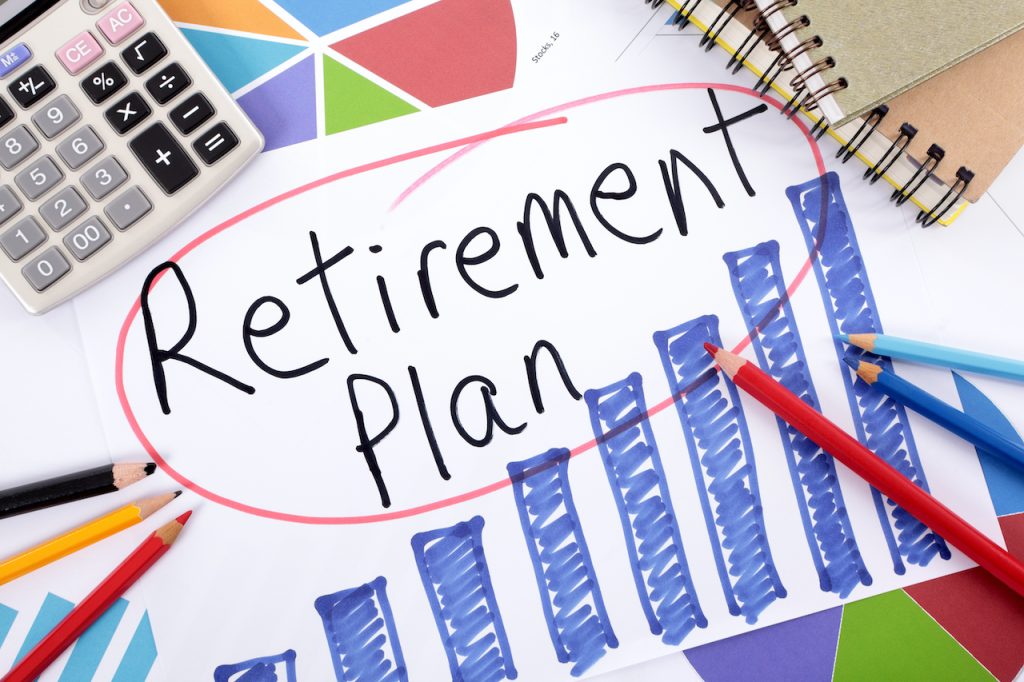
Are you dreaming of breaking free from the 9-to-5 grind sooner rather than later? You’re not alone. More and more Americans are exploring the exciting possibility of early retirement. But how can you turn this dream into reality? Let’s dive into the world of early retirement planning and uncover the secrets to financial independence.
The Early Retirement Revolution: Why Wait Until 65?
Gone are the days when retirement was synonymous with your 65th birthday. Today, a growing movement of finance-savvy individuals is redefining what it means to retire. Whether you’re aiming for FIRE (Financial Independence, Retire Early) or simply want more flexibility in your later years, early retirement planning is your ticket to freedom.
But let’s be real – achieving early retirement isn’t a walk in the park. It requires careful planning, disciplined saving, and smart investing. Don’t worry, though. We’ve got your back with this comprehensive guide to early retirement planning in the USA.
Crafting Your Early Retirement Roadmap: Key Strategies
1. Set Clear Financial Goals
Before you can hit the beach or start that passion project, you need to know exactly what you’re aiming for. Ask yourself:
- At what age do I want to retire?
- What lifestyle do I envision in retirement?
- How much annual income will I need to support this lifestyle?
Pro tip: Use a retirement calculator to get a ballpark figure of how much you’ll need to save.
2. Supercharge Your Savings Rate
Early retirement requires a supercharged savings strategy. While the average American saves about 5-10% of their income, early retirees often aim for 50% or more. It sounds daunting, but it’s doable with the right mindset and tactics:
- Live below your means
- Cut unnecessary expenses
- Increase your income through side hustles or career advancement
- Automate your savings
Remember, every dollar saved is a step closer to financial freedom.
3. Master the Art of Investing
Saving alone won’t cut it – you need to make your money work for you. Here’s where smart investing comes into play:
- Maximize tax-advantaged accounts like 401(k)s and IRAs
- Consider a mix of low-cost index funds and ETFs
- Explore real estate investments for passive income
- Stay informed about market trends and investment strategies
Don’t forget to rebalance your portfolio regularly and adjust your strategy as you get closer to your retirement date.
4. Plan for Healthcare Costs
One of the biggest challenges of early retirement in the USA is healthcare. Without employer-sponsored coverage, you’ll need to factor in substantial healthcare costs. Options to consider:
- Health Savings Accounts (HSAs) for tax-advantaged savings
- Private health insurance plans
- Healthcare sharing ministries
- Part-time work to maintain some level of coverage
5. Develop Multiple Income Streams
Relying solely on your investment portfolio can be risky. Diversify your income streams to create a more stable financial foundation:
- Rental income from real estate investments
- Dividend-paying stocks
- Part-time consulting or freelance work
- Online businesses or passive income ventures
The more diverse your income sources, the more resilient your early retirement plan will be.
Early Retirement Strategies: A Comparison
Let’s break down some popular early retirement strategies to help you find the right approach for your goals:
| Strategy | Pros | Cons | Best For |
|---|---|---|---|
| Traditional FIRE | Clear path to retirement, high savings rate | Requires significant lifestyle changes, may feel restrictive | Disciplined savers comfortable with frugality |
| Fat FIRE | More luxurious retirement lifestyle, less extreme saving | Requires higher income or longer saving period | High earners who want to maintain their current lifestyle |
| Lean FIRE | Quickest path to retirement, minimal expenses | Very frugal lifestyle, limited flexibility | Minimalists comfortable with a bare-bones budget |
| Barista FIRE | Balance of part-time work and leisure, potential health insurance benefits | Still requires some work, may delay full retirement | Those who enjoy working but want more flexibility |
| Coast FIRE | Less pressure on saving, allows for career changes | Delays full retirement, requires early start | Young professionals who want options later in life |
Remember, these strategies aren’t one-size-fits-all. Feel free to mix and match or create your own approach that aligns with your personal goals and values.
Navigating the Early Retirement Landscape: Expert Tips and Insights
As you embark on your early retirement journey, keep these expert recommendations in mind:
- Start yesterday: The power of compound interest is real. The earlier you start saving and investing, the easier your path to early retirement will be.
- Educate yourself: Personal finance knowledge is your superpower. Read books, follow financial blogs, and consider working with a financial advisor who specializes in early retirement planning.
- Build a support network: Connect with like-minded individuals through online communities like r/financialindependence or local meetups. Having a support system can keep you motivated and provide valuable insights.
- Stay flexible: Life happens, and your plans may need to adjust. Regular check-ins and willingness to adapt are crucial for long-term success.
- Don’t forget about personal fulfillment: Early retirement isn’t just about money. Plan for how you’ll spend your time and find purpose in your post-work life.
Real-Life Success Stories: Learning from Early Retirees
Sometimes, the best inspiration comes from those who’ve already achieved what you’re aiming for. Let’s take a quick look at some early retirement success stories:
- Mr. Money Mustache: Retired at 30 through extreme frugality and smart investing
- The Mad Fientist: Achieved financial independence in his 30s by optimizing tax strategies
- Our Next Life: A couple who retired in their late 30s while living in an expensive area
These stories show that early retirement is possible with dedication, smart planning, and a bit of creativity.
Overcoming Common Early Retirement Planning Hurdles
Even with the best-laid plans, you may encounter some challenges on your path to early retirement. Here are some common hurdles and how to overcome them:
- Market volatility: Diversify your investments and maintain a long-term perspective. Consider keeping a cash cushion to weather market downturns.
- Lifestyle inflation: Stay mindful of your spending habits and focus on experiences rather than material possessions.
- Career setbacks: Build emergency savings and consider income protection insurance to safeguard against unexpected job loss or disability.
- Family responsibilities: Factor in potential costs like children’s education or caring for aging parents when planning your retirement budget.
- Changing tax laws: Stay informed about tax regulations and be prepared to adjust your strategy as needed. Working with a tax professional can be invaluable.
The Psychology of Early Retirement: Preparing for the Mental Shift
Early retirement isn’t just a financial journey – it’s a psychological one too. As you plan for financial independence, don’t neglect the mental and emotional aspects:
- Develop hobbies and interests outside of work
- Build strong social connections to combat potential isolation
- Consider therapy or counseling to work through any anxiety about leaving the workforce
- Practice mindfulness and gratitude to fully appreciate your new lifestyle
READ ALSO: Term Life vs. Whole Life Insurance: Which Policy Is Right for You?
Remember, the goal of early retirement is not just to stop working, but to create a fulfilling and purposeful life on your own terms.
Frequently Asked Questions About Early Retirement Planning
To wrap up our guide, let’s address some common questions about early retirement planning:
- Q: How much do I need to save for early retirement?
A: The amount varies based on your desired lifestyle and retirement age. A common rule of thumb is to save 25-30 times your annual expenses. Use retirement calculators and consult with a financial advisor for a more personalized estimate. - Q: What if I can’t save 50% or more of my income?
A: While a high savings rate can accelerate your path to early retirement, it’s not the only way. Focus on increasing your savings rate gradually, look for ways to boost your income, and optimize your investments for growth. - Q: How do I access my retirement funds before age 59½ without penalties?
A: There are several strategies, including:- Roth IRA conversion ladder
- Rule 72(t) distributions
- Using taxable brokerage accounts
Consult with a tax professional to determine the best approach for your situation.
- Q: What about Social Security benefits if I retire early?
A: Early retirement may impact your Social Security benefits, as they’re based on your 35 highest-earning years. Factor this into your planning and consider delaying Social Security claims to maximize your benefits. - Q: How do I stay motivated during the long journey to early retirement?
A: Set smaller, achievable milestones along the way. Celebrate your progress, connect with like-minded individuals for support, and regularly visualize your ideal retirement lifestyle to stay focused on your goals.
Conclusion: Your Path to Financial Freedom Starts Now
Early retirement planning in the USA is an exciting journey that offers the promise of financial freedom and a life lived on your own terms. While it requires dedication, careful planning, and some sacrifices along the way, the rewards can be truly life-changing.
Remember, there’s no one-size-fits-all approach to early retirement. Use the strategies, tips, and insights in this guide as a starting point, but don’t be afraid to chart your own unique path. Stay informed, remain flexible, and keep your ultimate goals in sight.
Are you ready to take control of your financial future and work towards the retirement of your dreams? The time to start is now. Your future self will thank you for every step you take today towards financial independence and early retirement.






